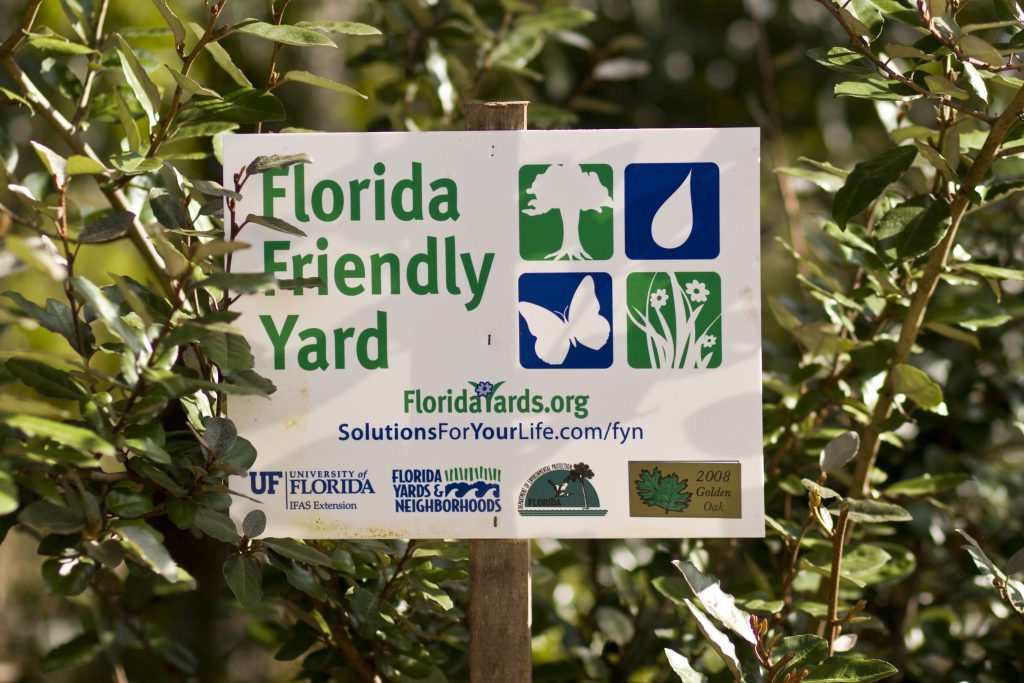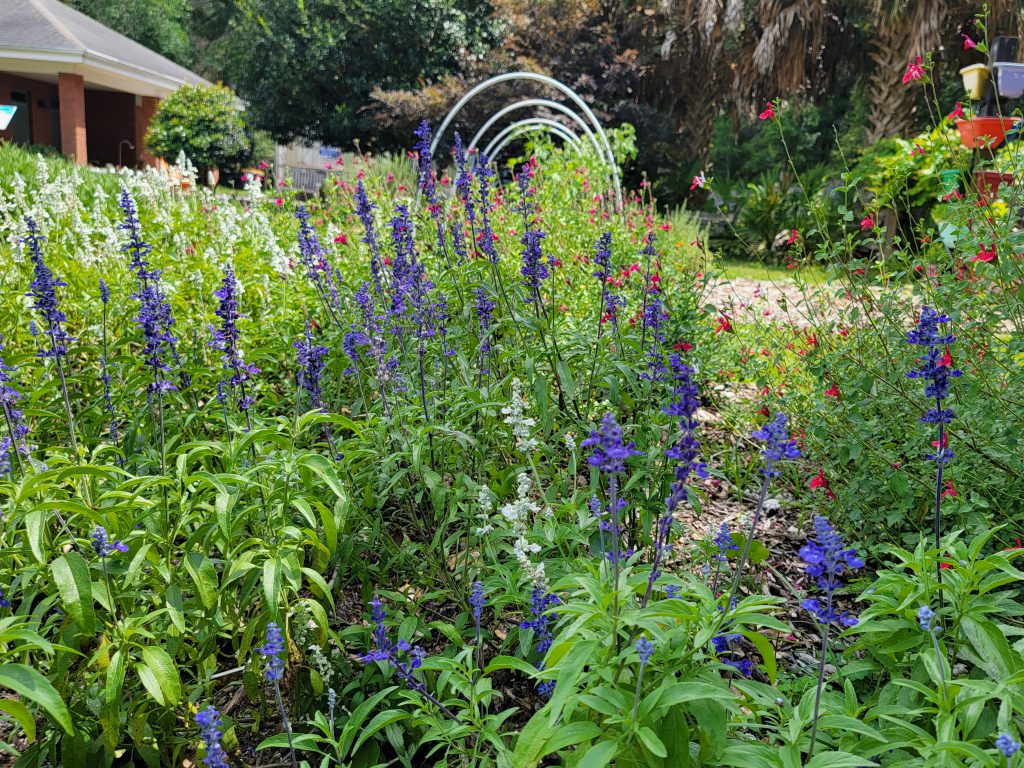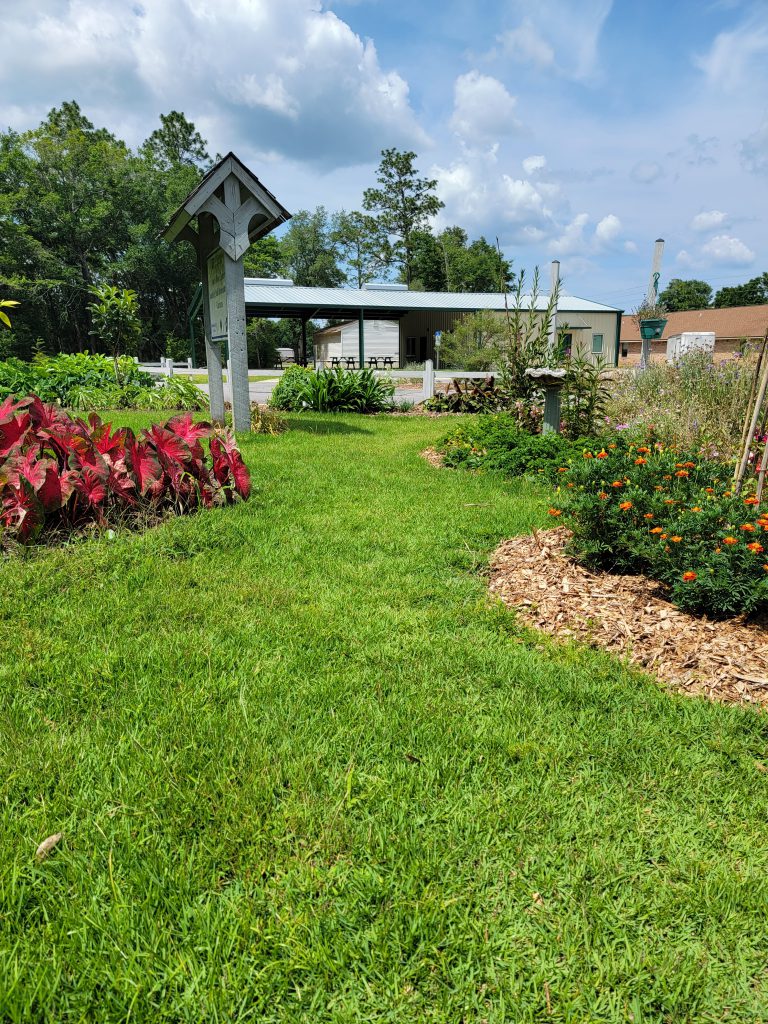Landscapes can be a tricky topic. Doubtless, you’ve heard people debate the ecological benefits of a turfgrass lawn. An internet search will have your head swimming in opinion pieces detailing the benefits of keeping and removing your turfgrasses. Some outline the aesthetic virtues while others speak to pollinator support from native flowering plants. It can be overwhelming and there are a lot of factors to weigh in these decisions. Luckily this is a situation in which following the Florida Friendly Landscaping program means you may have your cake and eat it too.
Florida Friendly Landscaping
Florida Friendly Landscaping or FFL is a series of nine principles designed to maximize the ecological services of your landscaping while minimizing inputs. It all begins with selecting the correct plants and placing them in the proper place. Once in place, proper maintenance is covered by the following three principles which involve proper watering, fertilization, and mulching. Since we planted good larval and nectar plants our landscape attracts wildlife, which is the next principle. In this process, you’re likely to also attract insects you don’t want. Managing these responsibly is our next principle. The final three principles involve utilizing plant waste from your landscape, managing stormwater, and protecting waterways. Where a good deal of these involves proper maintenance and selection of plants, the purpose of this article is to highlight the two main ecological services outlined in these principles.

Support Wildlife
The first of these is attracting wildlife which for a wide swath of homeowners will focus on supporting pollinators. Pollination is critical for non-vegetative reproduction in plants. It’s the reason they produce vegetables or flowers. Many creatures aside from the well known ones perform pollination including bats, birds, flies, and beetles. Look into the needs of the pollinators you wish to attract and understand how these creatures eat, breed, and nest. These pieces of knowledge will help you decide on landscape plants. Create habitat by planting smaller areas with native and noninvasive plants which meet the needs of the pollinators you wish to attract. These areas need not replace all the turfgrass areas, and in fact, it’s better if they don’t.

Turfgrasses are Crucial in Your Landscape
Turfgrasses are ecological workhorses. They cool your environment, build soil, prevent erosion, aid water infiltration, and are arguably the best bio-filter in the plant world. Properly maintaining your grass is much easier than you may think. They need 1/2 to 3/4 inch of water per irrigation event, and generally only 1-2 pounds of nitrogen per 1000 square feet per year (Bermudagrass may need up to 5 pounds). Even this may be less pending soil testing. Keeping these grasses stress free through proper maintenance allows them to grow lush with little input.
Their benefit as a bio-filter comes into play with regard to storm water. This runoff is a seldom thought of as a pollution source. On top of moving debris and latent chemicals into local waterways, it washes dissolved organic nitrogen through the soil. All of this eventually finds its way into local waterways. Grass areas of your landscape slow free flowing storm water and filter pollutants preventing excess nutrient and pollution loads in the watershed.

Following the principles of a Florida Friendly Landscape can boost the aesthetics of your property and provide an ecological boon. Mix flowering and turfgrass sections of your landscape to meet these goals. For more information on these principles, see this Ask IFAS document, or contact your local extension agent for additional information on this and any topic regarding your gardens and more.
- It’s Time for Sweet Potatoes - May 22, 2025
- Ecological Benefit and Upkeep of Florida Lawns - April 21, 2025
- What are Fertilizers? - March 6, 2025
